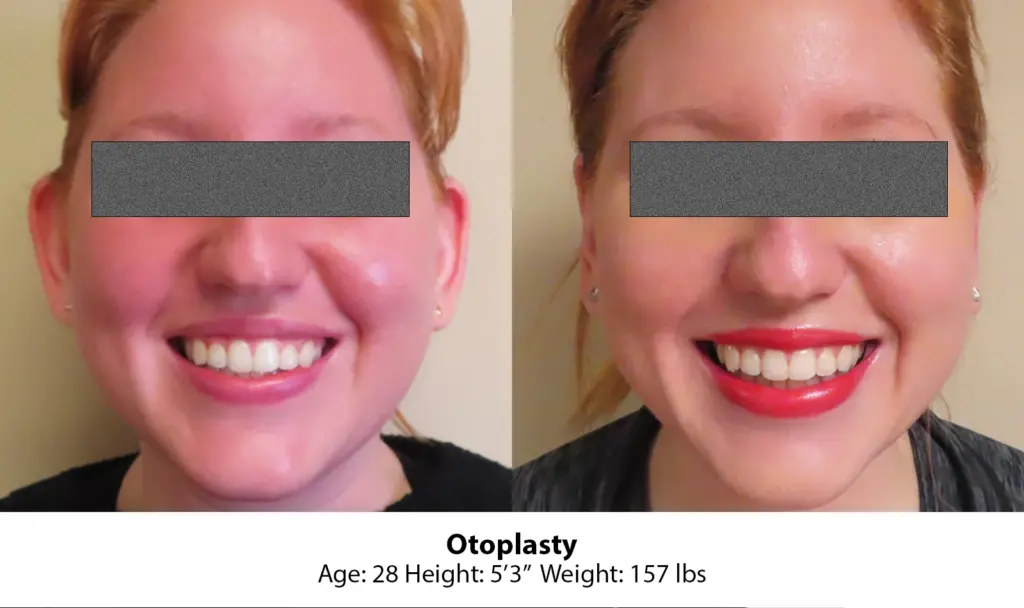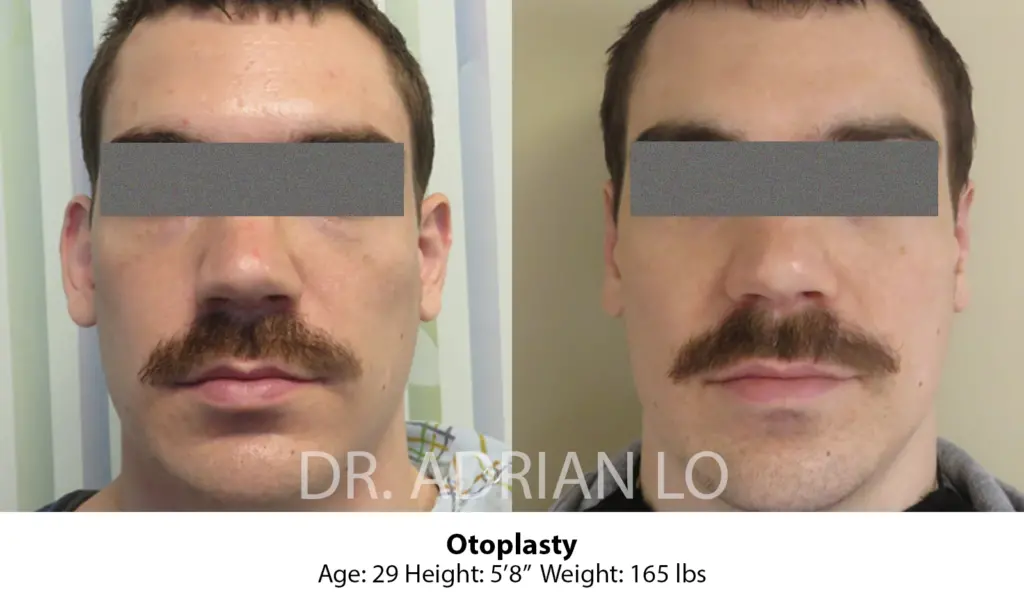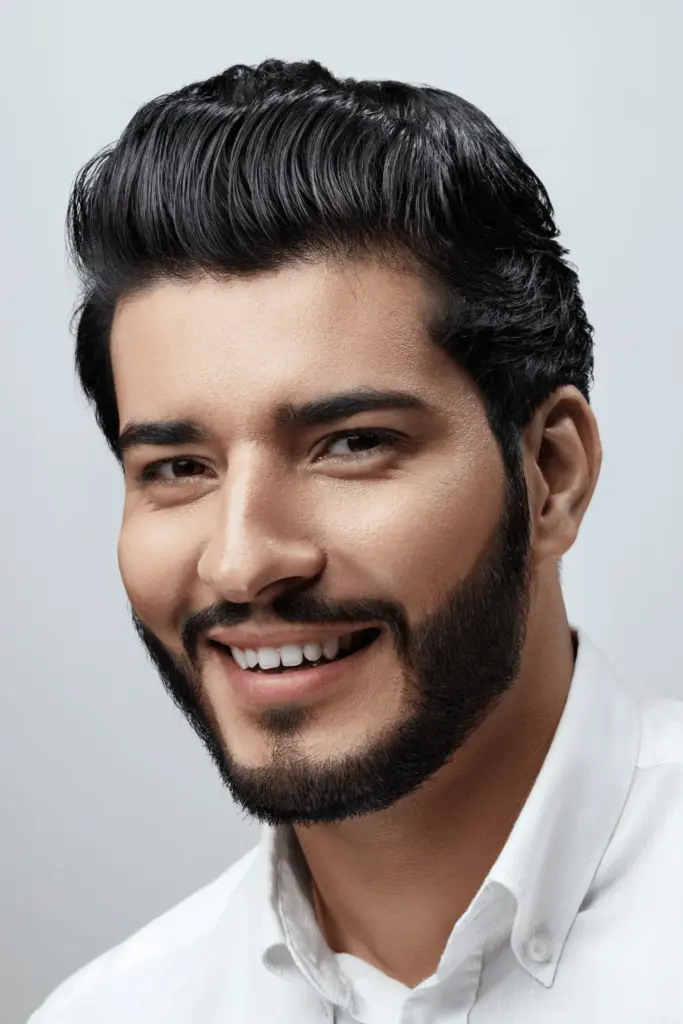Whether you’ve struggled with teasing or simply want to enhance your overall facial harmony, ear pinning surgery could be the answer you’ve been looking for.
If you’ve been curious about the benefits of ear pinning, seeing ear pinning before and after images may help. Here’s what you need to know about this procedure to determine if ear pinning surgery is a good fit for you.
Understanding Ear Pinning Surgery

Ear pinning, also known as otoplasty, is a surgical procedure to correct protruding ears. Ear pinning surgery reshapes the cartilage of the ear and repositions the ear closer to the head to create a more balanced and cosmetically pleasing appearance.
The benefits of ear pinning surgery extend beyond just physical appearance. Many patients report a significant boost in confidence and self-esteem from even just seeing their ear-pinning surgery before and after photos!
While ear pinning surgery is safe and effective, it’s important to understand that it is still a surgical procedure with uncommon potential risks and complications. These may include infection, scarring, or changes in sensation. However, with a qualified plastic surgeon and proper aftercare, these risks can be greatly minimized.
Now that you know the basics, let’s break down the steps of ear pinning or otoplasty surgery.
Initial Consultation and Planning

Assessing Your Goals and Expectations
The first step in your ear pinning journey is a comprehensive consultation with a qualified plastic surgeon. This is an opportunity for you to express your cosmetic goals, discuss your expectations for the surgery and learn what you can expect from the procedure. You will also be able to review images of ears pinned back before and after the surgery.
Your plastic surgeon will carefully examine your ears, taking into account their size, shape, and degree of protrusion.
During the consultation, your plastic surgeon will also review your medical history to ensure you are a suitable candidate for the surgery. Certain medical conditions, like bleeding disorders or allergies, may require additional precautions.
Remember, communication is key throughout the entire process. Don’t hesitate to ask questions or express any concerns that you may have. Your plastic surgeon is there to guide you and ensure you have a positive experience, so if at any time you feel your questions aren’t being answered, you might want to consider finding a plastic surgeon who will make you feel comfortable and confident about your decision.
Surgical Techniques Explained
Your plastic surgeon should explain what the surgery entails from start to finish.
Otoplasty encompasses various surgical techniques tailored to the individual’s ear anatomy and desired outcome. These techniques often involve a combination of:
- Incision to expose the ear cartilage
- Scoring the cartilage to reshape it
- Correction of protrusion by suture placement
Sutures play a crucial role in reshaping and repositioning the ear cartilage, however cartilage scoring techniques like incisions, excisions, or abrasions may be used as well to shape the ear cartilage.
Your plastic surgeon will determine the most suitable techniques for your situation to ensure the best possible outcome for you and your ear pinning before and after photos!
Preparing for Ear Pinning Surgery

There are important steps you should take before and after ear pinning surgery, and we’re here to make sure you’re set up for success!
Preoperative Instructions
Before undergoing ear pinning surgery, your plastic surgeon will provide detailed instructions to ensure a smooth and successful procedure. These instructions typically include:
- Avoiding certain medications like aspirin and ibuprofen that can increase bleeding
- Stop smoking for 2 weeks before and 2 weeks after surgery.
- Refraining from eating or drinking anything for a specified period before surgery
- Arranging for transportation and assistance after the procedure
In some cases, pre-surgery lab tests or medical evaluations may be required to assess your overall health and suitability for surgery.
Anesthesia Options
Ear pinning surgery is usually performed under local anesthesia with sedation or general anesthesia.
Local anesthesia numbs the ears and surrounding area, while sedation helps you relax during the procedure. General anesthesia, on the other hand, induces a deeper sleep-like state.
The choice of anesthesia depends on factors such as your preference, your plastic surgeon’s recommendation, and the complexity of the surgery.
The Ear Pinning Procedure

1. Otoplasty Technique
During an otoplasty, your plastic surgeon typically makes an incision behind each ear or within the natural creases of the ear to minimize visible scarring. The precise location and length of the incisions depends on the individual’s anatomy and desired outcome.
Your plastic surgeon carefully plans the incisions to achieve the optimal ear pin back before and after results while maintaining the natural appearance of the ears.
2. Anesthesia
The procedure begins with the administration of anesthesia, either local with sedation or general, as agreed upon during the consultation. Local anesthesia numbs the ears and surrounding area, while sedation helps you relax and feel drowsy during the surgery. General anesthesia induces a sleep-like state throughout the procedure.
3. Incision
Once anesthesia takes effect, your plastic surgeon creates the planned incisions with a scalpel. The exact location and design of the incisions will vary depending on the individual’s needs.
In most cases, the plastic surgeon will make an incision directly behind the ear to expose the ear cartilage to perform the reshaping and correction of the ear protrusion.
An experienced plastic surgeon will meticulously place the incisions to minimize scarring to ensure a natural-looking outcome.
4. Cartilage Reshaping
With the underlying cartilage exposed, the plastic surgeon can now carefully reshape it to achieve the desired position and contour of the ears. This may involve techniques like:
- Cartilage weakening: In some cases, your plastic surgeon may weaken the cartilage by scoring the cartilage with a scalpel blade to make it more pliable and easier to reshape.
- Cartilage removal: If there is excess cartilage contributing to the protrusion, your plastic surgeon may carefully trim or sculpt it to create a more defined and balanced appearance.
- Cartilage folding: In certain situations, your plastic surgeon may fold the cartilage inward using sutures to create a permanent fold that helps bring the ear closer to the head.
5. Correcting the Protruding Ear by Suturing
The protruding ear is corrected by using permanent sutures to secure the ear back into its new position naturally nearer to the side of the head. The sutures are strategically placed to ensure a natural look and long-lasting results.
6. Closing the Incision
Finally, your plastic surgeon closes the incisions with fine stitches. The type of stitches used will depend on the location and size of the incisions.
In most situations, your plastic surgeon may use dissolvable stitches that melt away on their own over time or external stitches that will need to be removed during a follow-up appointment.
7. Bandaging
After completing the procedure, your plastic surgeon will apply a bandage to the ears. This bandage helps to minimize swelling and supports the ears in their new position as they begin to heal. The type of bandage used and how long you need to wear it will vary depending on your plastic surgeon’s instructions.
The duration of the ear pinning procedure varies depending on the complexity of the case, but it generally takes about one hour. Patients go home the same day and can expect some swelling and bruising in the days following surgery.
Recovery Process

Before you can take your ears pinned back before and after photos, you need to first follow some important instructions from your plastic surgeon!
Postoperative Care Instructions
Following otoplasty, adhering to your plastic surgeon’s post-operative care instructions is crucial for a smooth and successful recovery. These instructions typically include:
- Wound care: Keeping the surgical area clean and dry is essential to prevent infection. Your plastic surgeon will provide specific instructions on how to clean the incision site, including how often and what cleaning solution to use.
- Bandage wear: You will likely need to wear a supportive headband/athletic sweatband for a period of time, as instructed by your plastic surgeon. This helps to minimize swelling and support the ears in their new position.
- Activity restrictions: Strenuous activity should be avoided for several weeks following surgery to allow the healing process to progress without complications. Your plastic surgeon will advise you on when it is safe to resume your normal activities.
- Sleeping position: Sleeping on your back with your head elevated for several weeks can help reduce swelling and prevent pressure on the ears.
- Pain management: You may experience minimal discomfort or pain following surgery. Otoplasty surgery is generally not a painful surgery and well tolerated. Your plastic surgeon will prescribe pain medication if needed to help manage any discomfort. It is important to take the medication exactly as prescribed and to avoid taking over-the-counter pain relievers unless approved by your plastic surgeon.
- Diet: In some cases, your plastic surgeon may recommend a soft diet for a short period following surgery to avoid putting stress on the healing incisions.
Following these instructions carefully will help minimize your risk of complications and promote optimal healing. It is important to attend all scheduled follow-up appointments with your plastic surgeon to monitor your healing progress and address any concerns.
You should contact your plastic surgeon immediately if you experience excessive pain, bleeding, or signs of infection.
Managing Discomfort and Swelling
After ear pinning surgery, it’s normal to experience mild discomfort and swelling. Your plastic surgeon may prescribe pain medication to help manage any pain, and you can also apply cold compresses to reduce swelling and alleviate discomfort.
Swelling typically subsides significantly within the first two weeks, and most patients can resume their normal activities within a few days to a week. However, it’s important to follow your plastic surgeon’s specific instructions regarding activity restrictions and to avoid strenuous exercise or activities that could put pressure on the ears.
During the healing process, your plastic surgeon will recommend wearing a headband/sweatband to support the ears in their new position and protect them from accidental bumps or pressure. This can also help to minimize swelling and promote faster healing.
Ear Pinning Results
Immediate Changes After Surgery
Immediately after surgery, your ears will be bandaged and appear swollen and bruised. However you will be pleased as you see the improvement immediately. As the swelling subsides over the next 7-10 days , you’ll start to see more results of your otoplasty surgery.
However, it may take several months for the final results to become fully apparent while the ears continue to heal and settle into their new position (so wait on those ear pinning before and after photos for just a bit longer!).
After the initial recovery period, the ears gradually heal, and subtle changes may occur for several months. The final ears pinned before and after results are typically seen within six months, as the ears fully settle into their new position. The scars behind the ears will also fade and become less noticeable over time.
Once the ears have healed, they are unlikely to return to their original protruding position. While some minor adjustments may occur due to natural aging, the overall outcome of the surgery is typically long-lasting.
For many patients, seeing the initial changes in their ears after ear pinning surgery can have a profound psychological impact. It can boost self-confidence, improve body image, and enhance overall well-being. Many individuals who have undergone ear pinning surgery report feeling more comfortable and confident with their appearance, leading to a more positive outlook on life!
Long-Term Healing and Final Results: Get Your Ears Pinned at Dr. Adrian Lo MD!
Countless patients have experienced life-changing transformations after undergoing surgery with Dr. Adrian Lo MD, from ear pinning to a mommy makeover, the results speak for themselves!
If you’re considering ear pinning surgery, don’t hesitate to contact us today for a consultation. Our Philadelphia plastic surgery clinic is ready to discuss your options and help you take the first step toward achieving the ears you’ve always desired!
